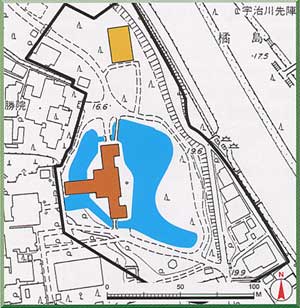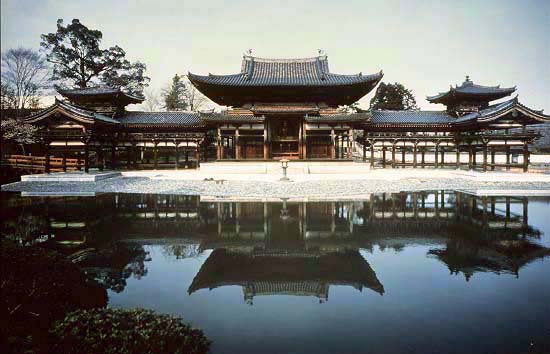| JAPANESE | |
| H. Byodo-in | |
| The building and the garden which express "Gokuraku Jodo" | |
| Establishment: The middle of the 11th century (1052) | |
| The Byodo-in was originally one retreat, owned by Fujiwara no MIchinaga and was converted into a temple in 1052 by his son, the Kanpaku (imperial regent) Fujiwara no Yorimichi. In the following year , the Amidado (Amida Buddha hall, widely known today as the Ho-o-do (phoenix hall) was built which enshrined a statue of Amida Buddha carved by the sculptor Jocho. By the begining of the 12th century, the Hokkedo, the Godaido and other building were added. Whereas most of these were destoryed when the temple complex was put to the torch in 1336, the original Ho-o-do, the Kamakura Period reconstruction of the Kannondo (Kannon hall) and the Shoro (belfry) survive to the present day. The Ho-o-do is an airy and graceful structure comprising a central hall flanked by two wings with a corridor behind. The main roof of the central hall is ornamented at either end by a bronze figure of the phoenix-like mythological bird known as ho-o. The interior is adorned with an ornate double ciborium, hosoge designs, carved bodhisattvas and murals. In front of the Phoenix Hall lies a garden with a pond, intended to represent the Judo (Pure Land Paradise). This garden is unique in incorporating the surrounding natural scenery, and is known as the "Jodo garden". The Byodo-in garden served as the prototype for the temple garden built around a central Amida Buddha hall. |
 |
 |
|
| Photo by Byodo-in | |
Map of "Historic Monuments of Ancient Kyoto" |
|